Halloween
6 Reasons Dracula Will Give You Goosebumps
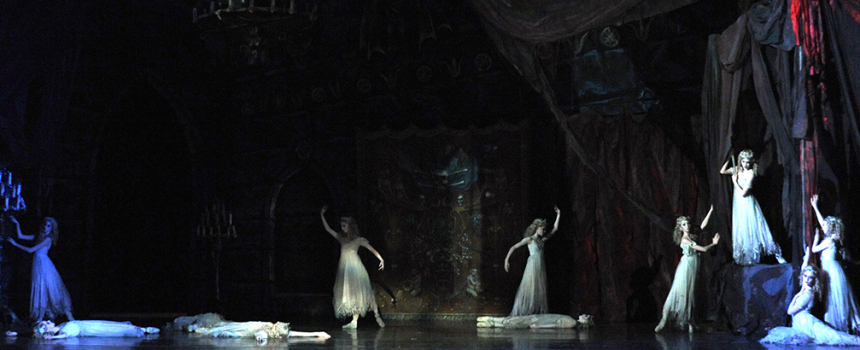
Dracula kicks off Pittsburgh Ballet Theatre’s 2017-2018 Season with a dark, beautiful ballet perfect for Halloween weekend. Here are our top six reasons it will give you goosebumps.
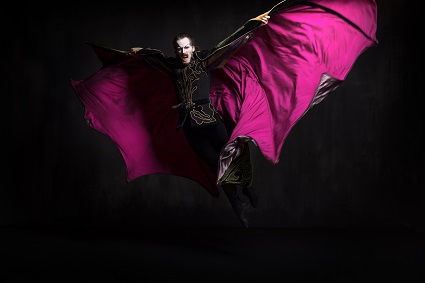
1. The ballet is inspired by Bram Stoker’s 1897 gothic novel – the granddaddy of all vampire dramas.
The ballet tells a dark, yet juicy love story. Dissatisfied with his undead brides, Dracula fixates on Svetlana, a young woman who’s head over heels for a mortal man, to satiate his thirst for fresh blood. His obsession traps Svetlana and her new fiancé Frederick, in a dangerous love triangle.
Tales of vampire-like creatures date back to ancient Rome, Greece and Egypt, but today’s depiction emerged during the 1700s in Eastern Europe: evil spirits that lurked in graveyards, entering dead bodies and awakening them to an “undead” state. Along with attempts to explain the unexplainable, vampirism seems to find root in humans’ fear of dying and quest for immortality. Although vampire lore has existed for centuries, the image Stoker created has become the standard in pop culture and artistic interpretations around the world.
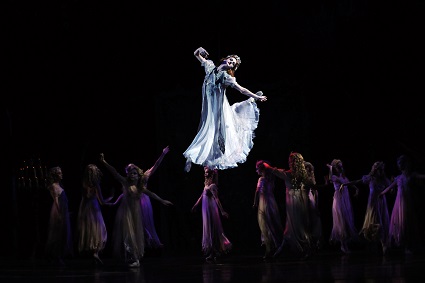
2. Like bats, these vampires fly through the night.
The choreography includes a spooky levitation scene for Svetlana and eerie flying sequences for Dracula and a few of his leading ladies. For the aerial scenes, choreographer Ben Stevenson recruited Foy Inventerprises (also know as Flying by Foy), the same experts who’ve given wings to film, Broadway and music stars, including Lady Gaga, Beyoncé and Taylor Swift.
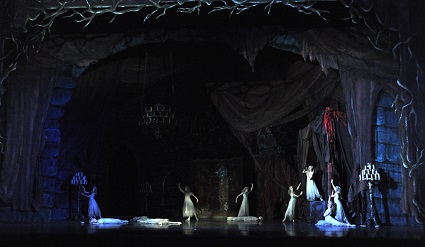
3. The New York Times says, “the sets, costumes and lighting are not just lavish but exquisitely beautiful and atmospheric.”
The ballet opens in the Count’s candlelit crypt, a “dark, nocturnal world in which vampires thrive,” explains set designer Thomas Boyd.
To depict 19th-century Transylvania (the central part of present-day Romania), both Boyd and costume designer Judanna Lynn studied the fictional world of Stoker’s novel and the traditional dress and architecture of the actual region. The ballet features three distinct scenes – the crypt, the village and Dracula’s bedroom – and over 70 costumes. Most elaborate is the Count’s.
When Dracula fully unfurls his 30-pound cape, its bat-like edges reach an imposing wingspan of 23 feet. His brides wear tattered wedding gowns, streaked with the dirt of the grave and adorned according to the era they became vampires.
For the scenery, Boyd said, “The works of 19th century German painter Caspar David Friedrich are very evocative of the feeling and style that I was seeking. In his work, there is a sense of immortality, of timelessness, of an energy that transcends time. And it is this feeling that I am seeking to evoke in setting the scene for the ballet.”
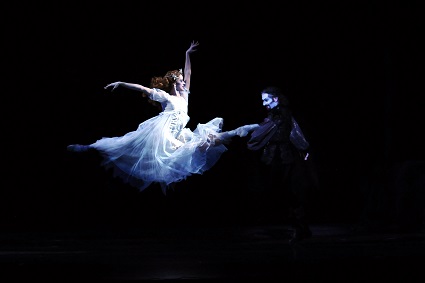
4. The dancing has teeth (and so do the dancers).
Some say the ghostly corps de ballet scenes, with 18 swirling vampire brides, reminds them of a spin on Giselle’s veil-wearing Wilis, zombie-like maidens jilted before their wedding days. Although the choreography is worlds away, choreographer Ben Stevenson employs similar “ballet en blanc” conventions for the corps of vampire brides: all-white wardrobe and unified movements.
Meanwhile, in the village, normal life goes on, with bright folk dances and joyful variations for the newly engaged Svetlana and Franz…at least until Dracula crashes the party and abducts the belle of the ball. As Boyd puts it, “This is not your typical ‘happy peasants in the village scene.’ There’s a classic dichotomy here: These peasants live near Dracula’s castle, under the shadow of evil.”
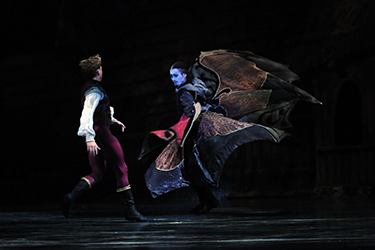
5. Pyrotechnics raise the stakes.
Garlic, crosses, stakes – the villagers try it all in their quest to rescue Svetlana from the Count’s clutches.
But a vampire’s ultimate kryptonite is sun exposure, so PBT pulls out the pyrotechnics for the Count’s final blaze of glory and Svetlana’s only saving grace. Keep your eye on the chandelier.
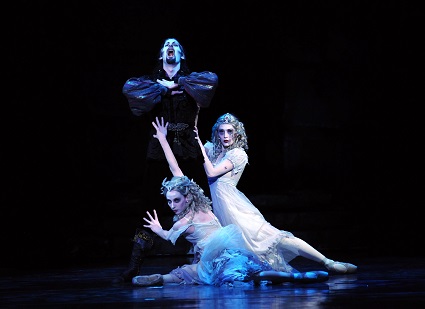
6. Franz Liszt’s Dance of the Dead inspired Ben Stevenson to set the choreography to this composer.
Liszt took the melody for this music from a 13th-century Gregorian chant called the Dies Irae, a piece of music that has been adapted for many works, including film scores for The Shining and even The Lion King. Hear some of this theme in the Dracula trailer. Another musical highlight is an Act I dance with two brides and Dracula to The Lugubrious Gondola (1882), an atonal work Liszt originally wrote for a funeral procession. Stevenson and John Lanchbery, the renowned music arranger and ballet conductor, chose the music of this famous 19th-century Hungarian composer and pianist, because they thought it was capable of creating the “atmosphere of terror” that descends on this 19th-century Hungarian village.
Experience all the chills for yourself! Dracula returns Oct. 27-29, at the Benedum Center with tickets starting at $28. Get yours now.
6 Ways Giselle Will Give You the Wilis
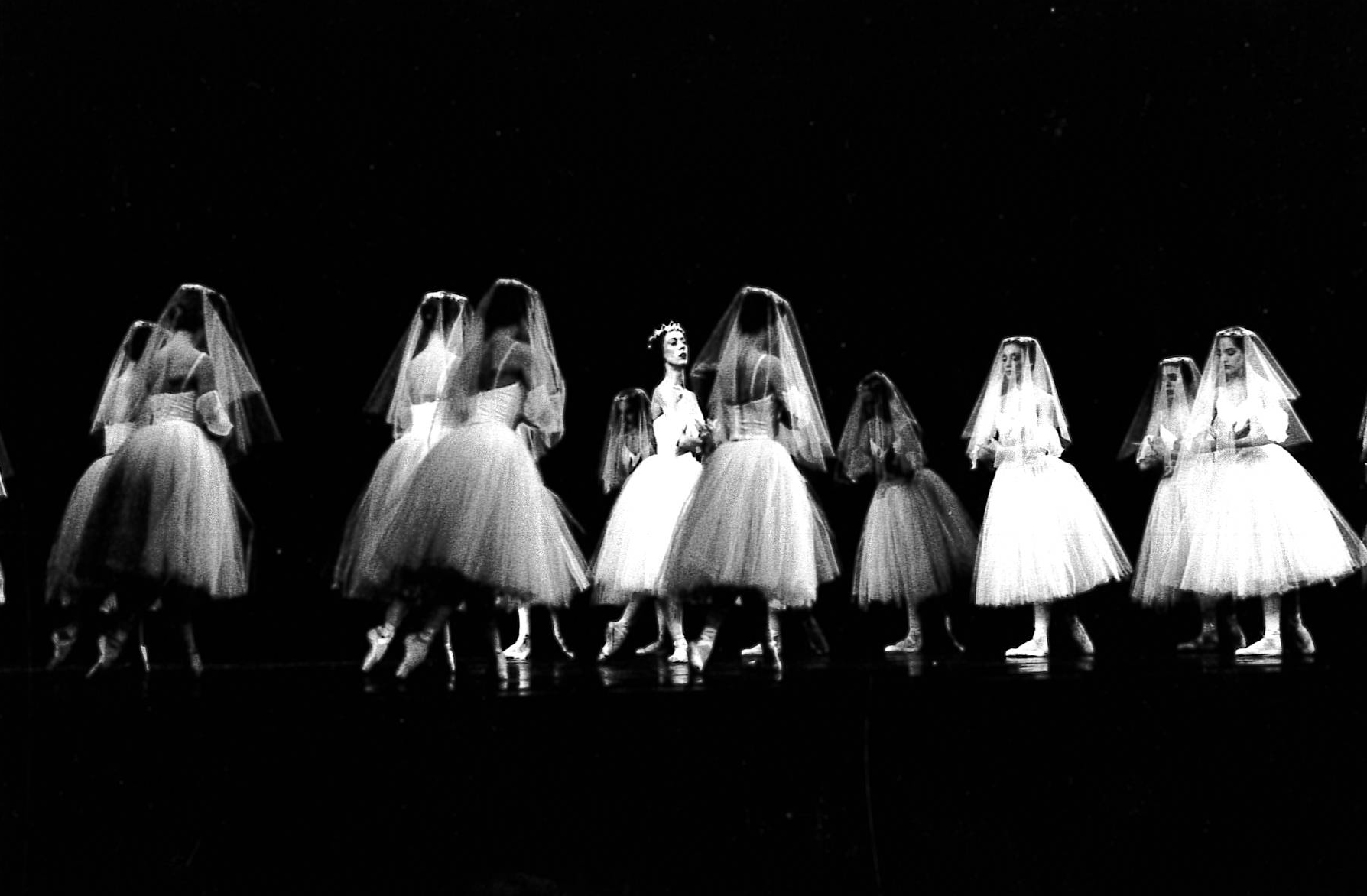
Drawing from supernatural themes of the Romantic era and Eastern European folklore, the story of Giselle juxtaposes love and betrayal, life and death, vengeance and forgiveness as a young girl descends to the unearthly realm of the Wilis.
The story opens with a blossoming village girl, euphoric in love. But Giselle’s hopes shatter when she learns her love, masquerading as a peasant, is already engaged to a noblewoman from his own class. Here the story unmoors from the mortal world. When the curtain rises on Act II, Giselle is no longer among the living.
Excerpted from the Giselle Audience Production Guide, here are six spook factors that will raise the hair on your neck.
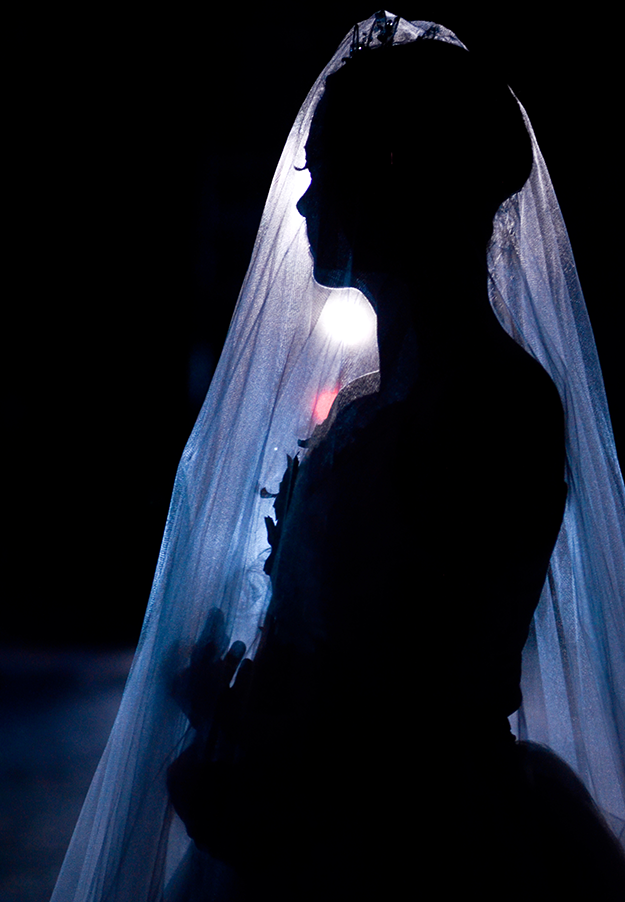
That Gives Me the Willies! This phrase, about something that sends a chill down your spine, may have originated from the ghostly Wilis of Giselle. Giselle is a 19th century masterpiece of the Romantic era, when themes in ballet shifted to nature, individuality and the supernatural. The inspiration was a Slavonic legend of the Wilis, ghosts of young maidens who died of grief after their love was betrayed. As the legend goes, their spirits haunt the highways in the dark of night, luring young men and forcing them to dance to their deaths. The legend of the Wilis predates Giselle and assumed shifting forms throughout Eastern European folklore. From maidens who were cursed by God to those who died unbaptized, the variations and pronunciations varied throughout the region. One variation is found in Harry Potter and the Goblet of Fire with the Veela, magical beings whose entrancing beauty compels men to dance to their deaths. In Giselle, the Wilis are frightening, yet tragic figures — young women doomed to perpetual heartbreak.
The Mad Scene: From the festive village scene to the otherwordly aura of Act II, the role of Giselle takes the ballerina on an incredible arc of emotions and movement qualities. And at the end of Act I, as Albrecht’s betrayal becomes apparent, Giselle just kind of…snaps. “She replays in her mind—with halting steps and distracted motions — the daisy scene, where he swore his love to her; she stumbles through the steps of their first pas de deux. Her hair comes down, her anguish on full display. Finally, she dies, from a weak and broken heart,” writes Lisa Auel, PBT’s manager of audience education.
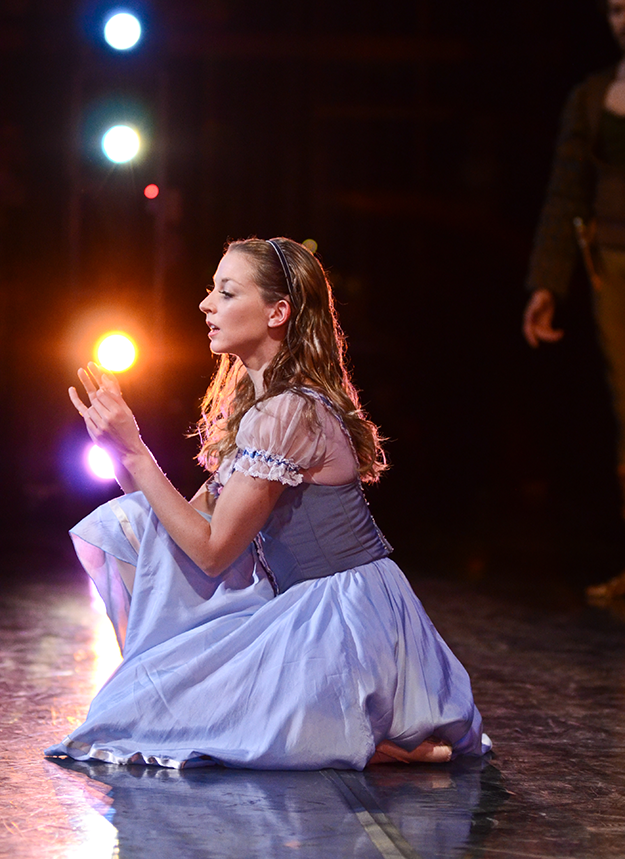
Musical Foreshadowing: One of ballet’s first original scores, the music of Adolphe Adam also innovates with recurring musical themes that characterize roles and moods throughout the narrative. One eerie example is Giselle and Albrecht’s first love theme, which ironically echoes during Giselle’s mad scene at the end of Act I. The musical theme of the Wilis also shadows Giselle’s mother’s premonition in Act I and again following Albrecht’s betrayal.
He Loves Me, He Loves Me Not: Featured in Giselle Act I, this schoolgirl daisy game traces its written roots to the pages of a nun’s 1471 songbook. As Giselle plucks petals from a daisy in Act I, however, this light-hearted game foreshadows Albrecht’s ill-fated betrayal.
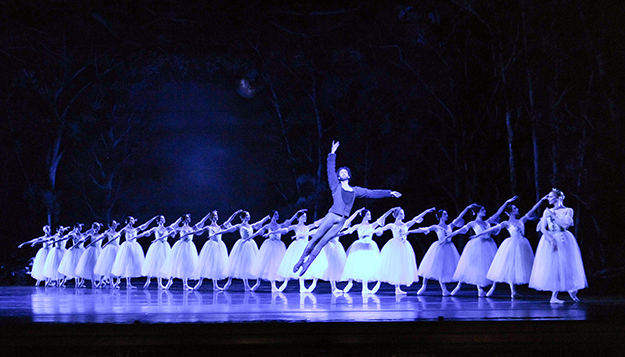
Ballet en Blanc: First seen in La Sylphide (1832), this term refers to scenes that feature the female corps de ballet costumed in pure white, dancing completely unified choreography. Sometimes referred to as “pure ballet,” it emphasizes the larger patterns and dramatic power of the corps, which assumes a menacing aura in Giselle. Act II finds Ballet en Blanc taking the ghostly character of the Wilis who (wearing their wedding dresses and veils), with their signature “flattened” arabesques, move into frightening formations. The Wilis did ballet blanc before the swans in Swan Lake and the shades in La Bayadère.
The Ballerina’s Dual Role: Perhaps even more subtle than the dual role of Swan Lake’s Odette and Odile, Giselle requires intricate artistry to embody first an earthly, then an ethereal essence, a mystique that makes it the ballerina’s definitive dramatic role. From Giselle’s joyful 32 ballonnés – a bouncing hop – to her Act II arabesques with the Wilis, the foreboding builds from the Mad Scene all the way to her grave site. According to Artistic Director Terrence S. Orr, “When we meet Giselle in Act I, she is euphoric in love. When she reenters in Act II, a chill runs down our spine. This is a young girl who spirals from joie de vivre to darkness in the blink of an eye. The shift in movement quality is exquisite, from buoyant leaps to an ethereal weightlessness.”
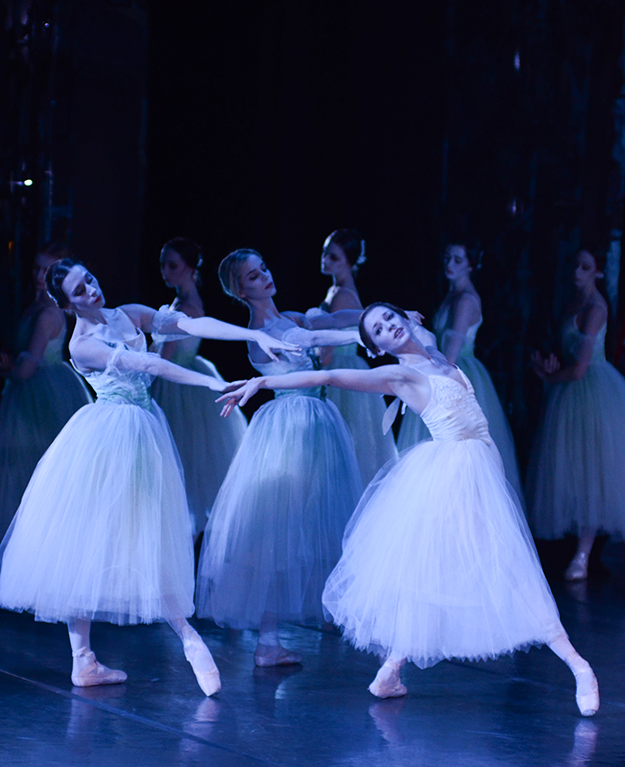
Highmark presentsGiselle with the PBT Orchestra opens Pittsburgh Ballet Theatre’s 50th Anniversary Season this Halloween weekend, Oct. 25-27, at the Benedum Center. Purchase your tickets here.
